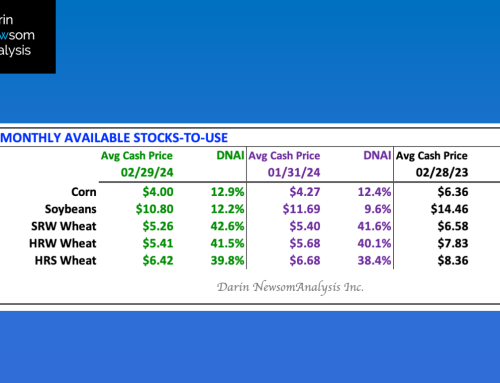Unlike the corn market, getting a read on US soybean supply and demand is a bit more difficult. The most reliable method I have at this time is a study of futures spreads, in this case the remaining spreads making up the 2020-2021 forward curve. This starts with the Jan-March spread and extends through the May-July. Note from the attached Cost of Carry table pulled early on December 1 that the Jan-March spread moved from an 8.25-cent inverse on October 30 to a 1 cent carry at the end of November. Staying on that same line, the Jan-May spread saw its inverse reduced from 11.50 cents to 1 cent while the Jan-July inverse went from 13 cents to only 3.75 cents. My interpretation of this Is early winter US supply and demand remains bullish, just not as bullish as it was a month ago. Over the course of November we saw the number of export sales announcements decrease dramatically, with the latest weekly update (for the week ending Thursday, November 19) showed outstanding sales of 1.003 bb as compared to the previous month’s final 1.170 bb. Total sales (outstanding sales plus total shipments) increased from 1.782 bb near the end of October to 1.908 bb toward the end of November. Total shipments will be pressing 1.0 bb when the next weekly update is released for the week ending Thursday, November 26.
As we look ahead through the rest of winter and into spring 2021 we also see a continued bullish outlook. The March-May spread finished November at an inverse of 2 cents, slightly weaker than the 3.25 cents at the end of October while the March-July showed an unchanged inverse of 4.75 cents. Lastly, the May-July spread saw its inverse strengthen from 1.50 cents on October 30 to 2.75 cents as November came to a close. This indicates the long-term view of supply and demand grew more bullish over the last month.





